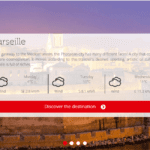
In the ever-changing world of fashion, where trends come and go at lightning speed, only a few platforms have managed to strike a lasting chord with consumers and industry insiders alike. Ssense (pronounced “essence”) is one such entity. What started in 2003 as a modest e-commerce platform based in Montreal has grown into a globally recognized fashion powerhouse—curating, influencing, and even reshaping how we experience fashion online and offline. The evolution of Ssense from a digital storefront to a cultural and fashion authority is nothing short of remarkable.
Humble Beginnings: Ssense as a Startup
Ssense was founded in 2003 by three brothers—Rami, Firas, and Bassel Atallah—in Montreal, Canada. What set the platform apart from the beginning was its seamless fusion of high fashion and streetwear, a combination that was still considered unconventional at the time. While most retailers specialized in either traditional luxury or emerging streetwear brands, Ssense dared to blend the two worlds, creating a space where Balenciaga could coexist with Off-White, and Gucci could be displayed alongside Rick Owens.
At its core, Ssense was created as a digital-first business—a forward-thinking decision during a time when most luxury retailers were just starting to explore the potential of the internet. With an emphasis on sleek user experience, curated selections, and exclusive collaborations, the platform attracted a generation of consumers hungry for something that felt edgy, elevated, and accessible from anywhere in the world.
The Rise of Digital Luxury
During the 2000s, luxury fashion was still tethered to brick-and-mortar experiences. Boutiques and department stores were the main distribution channels, and many legacy brands were hesitant to embrace e-commerce. Ssense challenged this norm by proving that high-end fashion could be sold successfully online without losing its aspirational allure.
As digital consumer behavior evolved, Ssense quickly adapted. It invested heavily in technology, design, and logistics to create an experience that matched the luxury of the products it sold. With its minimalist interface, sharp editorial photography, and intuitive navigation, Ssense soon became the go-to destination for shoppers seeking a curated and refined online experience. This shift also enabled the platform to cater to a global clientele—delivering high-end fashion to over 150 countries.
Curation as Culture
What truly differentiated Ssense from its competitors was its commitment to curation. Rather than offering an overwhelming catalog of products, the site honed in on a tightly edited selection of designers and pieces that reflected current cultural movements. Whether it was the rise of normcore, the resurgence of ’90s minimalism, or the streetwear explosion, Ssense was always ahead of the curve.
Ssense’s buyer team and creative directors played an instrumental role in establishing the platform’s aesthetic voice. By championing both established designers and emerging talents, Ssense became a launchpad for names like Marine Serre, Craig Green, and GmbH—brands that might have otherwise flown under the radar. The platform also offered exclusive capsule collections and limited releases, which added a sense of discovery and urgency to the shopping experience.
Editorial Meets Commerce
One of the boldest moves in Ssense’s evolution was the integration of high-caliber editorial content with its shopping platform. Recognizing that fashion consumers were increasingly looking for meaning, storytelling, and context, Ssense launched a robust content arm that included interviews, think pieces, visual essays, and cultural critiques.
Unlike traditional fashion magazines, Ssense’s editorial content was deeply intertwined with its product offerings but never felt overtly commercial. Pieces on identity, politics, and underground subcultures sat alongside style guides and designer interviews. The Ssense Magazine blurred the lines between journalism, criticism, and commerce, creating a new model for fashion publishing.
This content strategy not only increased user engagement but also established Ssense as a thought leader. Readers returned not just to shop but to think, reflect, and be inspired. The platform became a cultural hub where fashion intersected with music, art, gender, and technology—a rare feat for an e-commerce brand.
The Brick-and-Mortar Experiment
In 2018, Ssense took a surprising step into the physical retail world with the opening of its Montreal flagship, Ssense MONTRÉAL. Far from a typical store, the multi-level space was designed by David Chipperfield Architects and functioned as part showroom, part art installation, and part editorial studio.
The building featured appointment-only shopping, curated exhibitions, and events that mirrored the brand’s digital ethos. It was a tactile manifestation of Ssense’s commitment to innovation, exclusivity, and experience. By blurring the lines between physical and digital retail, Ssense MONTRÉAL reinforced the company’s status as not just a store, but a concept—a living embodiment of the future of fashion retail.
Championing Diverse Voices
In recent years, Ssense has also placed a strong emphasis on inclusivity and representation. The platform has highlighted voices from marginalized communities and featured designers, models, and writers from diverse backgrounds. It has used its editorial space to explore issues related to race, gender, identity, and sustainability—topics that are often glossed over in mainstream fashion media.
This commitment to social relevance has further solidified Ssense’s role as a cultural authority. Its content and product curation reflect a keen awareness of the world we live in, making it a more meaningful and resonant brand for a younger, socially conscious audience.
Collaborations and Crossovers
Ssense’s savvy approach to brand partnerships has also played a crucial role in its ascent. Rather than relying solely on big-name collaborations, the platform has embraced unexpected and often avant-garde partnerships. Whether it’s exclusive drops with niche designers or experimental projects with artists and musicians, these collaborations are always fresh, compelling, and reflective of the Ssense identity.
In doing so, Ssense has cultivated a sense of anticipation and exclusivity. Limited-edition drops, early access releases, and influencer-driven capsules keep users coming back for more, eager to discover what’s next.
Tech-Driven Future
Technology has always been a cornerstone of Ssense’s strategy, and its recent investments in AI, data analytics, and user personalization signal an even more ambitious future. From predictive merchandising to immersive shopping experiences, the platform is continuously exploring how innovation can enhance the customer journey.
Mobile responsiveness, speed optimization, multilingual support, and seamless international shipping have all contributed to Ssense’s reputation for world-class service. As fashion e-commerce continues to evolve, Ssense remains at the forefront—setting standards rather than following them.
Global Influence
Today, Ssense isn’t just a retailer—it’s a global tastemaker. With millions of monthly visitors and a devoted following across social media platforms, the brand influences not only what people buy, but how they think about fashion. Its curated point of view has helped elevate streetwear to luxury status and brought avant-garde fashion into the mainstream conversation.
Designers covet placement on Ssense because it means cultural relevance. Shoppers rely on Ssense to guide their style choices, while creatives of all types—photographers, stylists, writers—see the platform as a space for collaboration and visibility.
The Future of Fashion Is Hybrid
As the line between physical and digital continues to blur, Ssense stands as a pioneer of hybrid fashion retail. Its ability to merge content and commerce, luxury and streetwear, art and accessibility, positions it uniquely in a saturated market. In a post-pandemic world where consumers crave both digital convenience and emotional connection, Ssense offers a blueprint for what fashion retail can and should be.
Conclusion: More Than Just a Store
The story of Ssense is more than just a retail success story—it’s a reflection of the fashion industry’s transformation in the digital age. By staying true to its vision while constantly evolving, Ssense has carved out a space that transcends commerce. It is at once a store, a magazine, a cultural hub, and a creative incubator.
As fashion continues to evolve, so too will Ssense. But if its history is any indication, it won’t just keep up—it will lead the way.





















